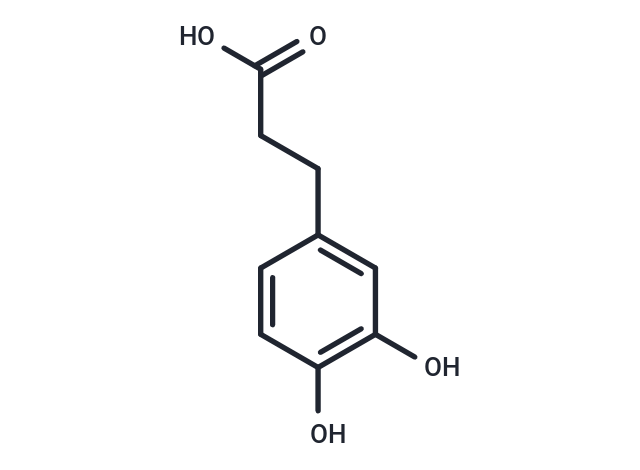Shopping Cart
- Remove All

Your shopping cart is currently empty


| Pack Size | Price | Availability | Quantity |
|---|---|---|---|
| 50 mg | $50 | In Stock | |
| 1 mL x 10 mM (in DMSO) | $45 | In Stock |
| Description | Dihydrocaffeic acid is a metabolite of chlorogenic acid, a well-known antioxidant component with antioxidant, anti-Alzheimer's disease, neuroprotective, arousal and lipid-lowering effects. |
| Alias | Hydrocaffeic acid |
| Molecular Weight | 182.17 |
| Formula | C9H10O4 |
| Cas No. | 1078-61-1 |
| Storage | Powder: -20°C for 3 years | In solvent: -80°C for 1 year | Shipping with blue ice. | |||||||||||||||||||||||||||||||||||
| Solubility Information | DMSO: 55 mg/mL (301.92 mM) | |||||||||||||||||||||||||||||||||||
Solution Preparation Table | ||||||||||||||||||||||||||||||||||||
DMSO
| ||||||||||||||||||||||||||||||||||||

Copyright © 2015-2024 TargetMol Chemicals Inc. All Rights Reserved.